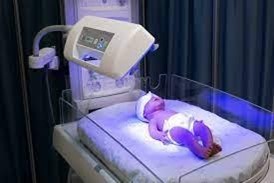Aureissisting a nurse midwife in examining a client who is a primigravida at 42 weeks of gestation and states that she thinks she is in labor. Which of the following findings confirms that the client is in labor?
Fain just above the navel
Cervical dilation
Amniotic fluid in the vaginal vault
Contractions every 3 to 4 min
The Correct Answer is B
Choice A rationale: Pain above the navel is not a specific indicator of labor and may be unrelated to the onset of labor.
Choice B rationale: Cervical dilation is a definitive sign of labor. It indicates that the cervix is opening to allow the baby's passage through the birth canal.
Choice C rationale: The presence of amniotic fluid in the vaginal vault (rupture of membranes) could indicate that the client's water has broken, but it does not confirm active labor. Labor can begin before or after the rupture of membranes.
Choice D rationale: Regular contractions are a typical sign of labor, but their frequency alone does not confirm active labor. Other signs, such as cervical dilation and effacement, are necessary to confirm active labor.
Nursing Test Bank
Naxlex Comprehensive Predictor Exams
Related Questions
Correct Answer is A
Explanation
Choice A rationale: During phototherapy, it is essential to maintain adequate hydration and nutrition for the newborn. Encouraging frequent breastfeeding helps provide the baby with essential nutrients and fluids, which can be lost due to increased stooling caused by phototherapy.
Choice B rationale: The use of lotion on the newborn's skin during phototherapy is not recommended, as it may interfere with the effectiveness of the light therapy. The skin needs to be exposed to the light for the treatment to work.
Choice C rationale: Monitoring the newborn's blood glucose level is not directly related to phototherapy. Blood glucose monitoring may be necessary for specific medical reasons, but it is not a standard intervention during phototherapy.
Choice D rationale: During phototherapy, the newborn is usually placed in a supine (face-up) position to ensure maximum exposure of the skin to the phototherapy lights. The prone position is not recommended during phototherapy as it may reduce the effectiveness of the treatment.

Correct Answer is D
Explanation
A. Breast engorgement typically occurs around days 3 to 5 postpartum, so encouraging frequent nursing at 14 hours postpartum will not impact milk production at this stage.
B. A temperature of 37.7°C (100°F) is a normal postpartum finding due to dehydration and hormonal changes. It does not require reporting unless it exceeds 38°C (100.4°F).
C. Increasing IV fluids is not necessary unless there is evidence of dehydration or another medical indication.
D. A slightly deviated fundus suggests bladder distension, which can interfere with uterine involution. Asking the client to empty her bladder helps the uterus contract properly and prevents complications such as postpartum hemorrhage.
Whether you are a student looking to ace your exams or a practicing nurse seeking to enhance your expertise , our nursing education contents will empower you with the confidence and competence to make a difference in the lives of patients and become a respected leader in the healthcare field.
Visit Naxlex, invest in your future and unlock endless possibilities with our unparalleled nursing education contents today
Report Wrong Answer on the Current Question
Do you disagree with the answer? If yes, what is your expected answer? Explain.
Kindly be descriptive with the issue you are facing.
